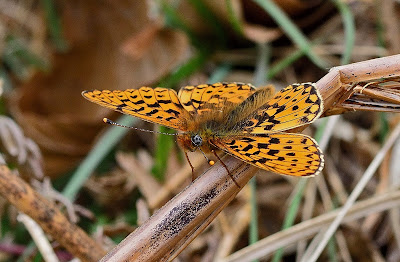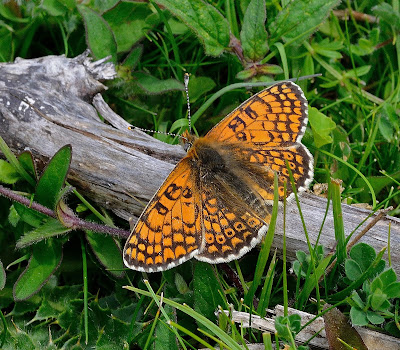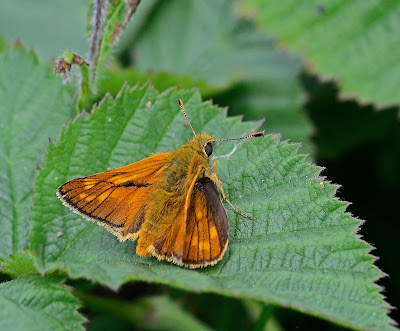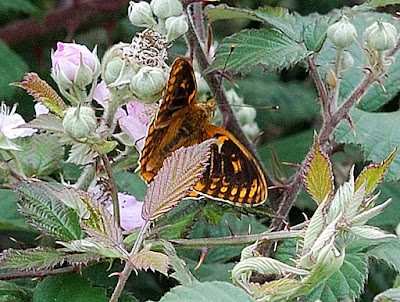The 2016 butterfly season in the UK has been disappointing with sightings down on recent years.The results of The Big Butterfly Count can be viewed here.I have found this trend too on my forays around the Isle of Wight this year.A noticeable lack of butterfly numbers in the common species that I would expect to see doing well as our summer had good spells of warm,even hot weather.
I was pleased to see that the Newport town centre White-letter Hairstreaks were back on the elm tree where they were discovered in 2015.Along our southern seaside cliffs the Glanville Fritillaries seem to have had a good season too.
During my two visits to the Greek Islands in 2016 I had the treat of seeing several Lang's Short-tailed Blues and that import from South Africa,the Geranium Bronze which has now spread all along the Mediterranean coast from Spain to Greece.An unexpected sighting was a colony of Lulworth Skippers among the wild flowers of an olive grove on Greek Island of Lefkada.A rare butterfly in the UK,only seen on the coastal cliff tops of Dorset.
However my favourite find was during May when a trip was made across the Solent to the New Forest in Hampshire to see the beautiful Pearl-bordered Fritillary.Now alas,gone from the Island since 2011 due to a lack of sustainable habitat at its last location in Parkhurst Forest.The particular New Forest inclosure visited on that day was named New Copse and despite the rather cloudy weather there were good numbers of these fritillaries on the wing.The habitat here is well managed for the needs of the Pearl-bordered.













































